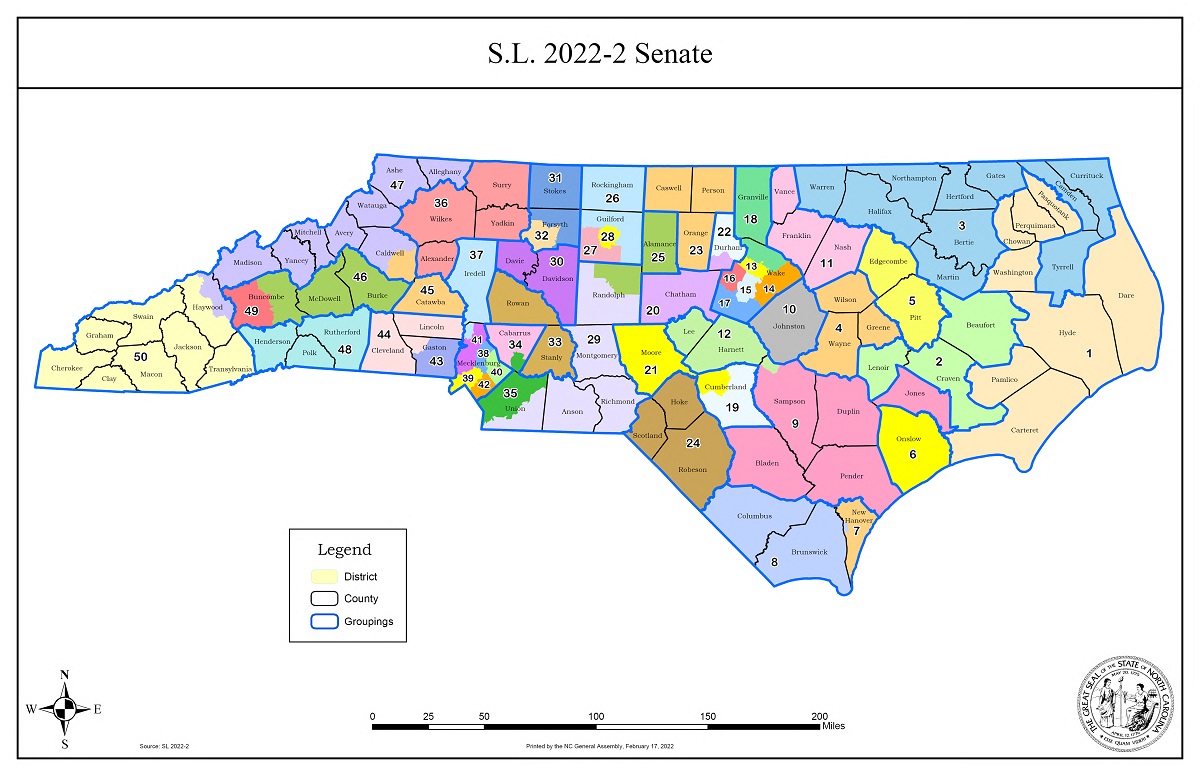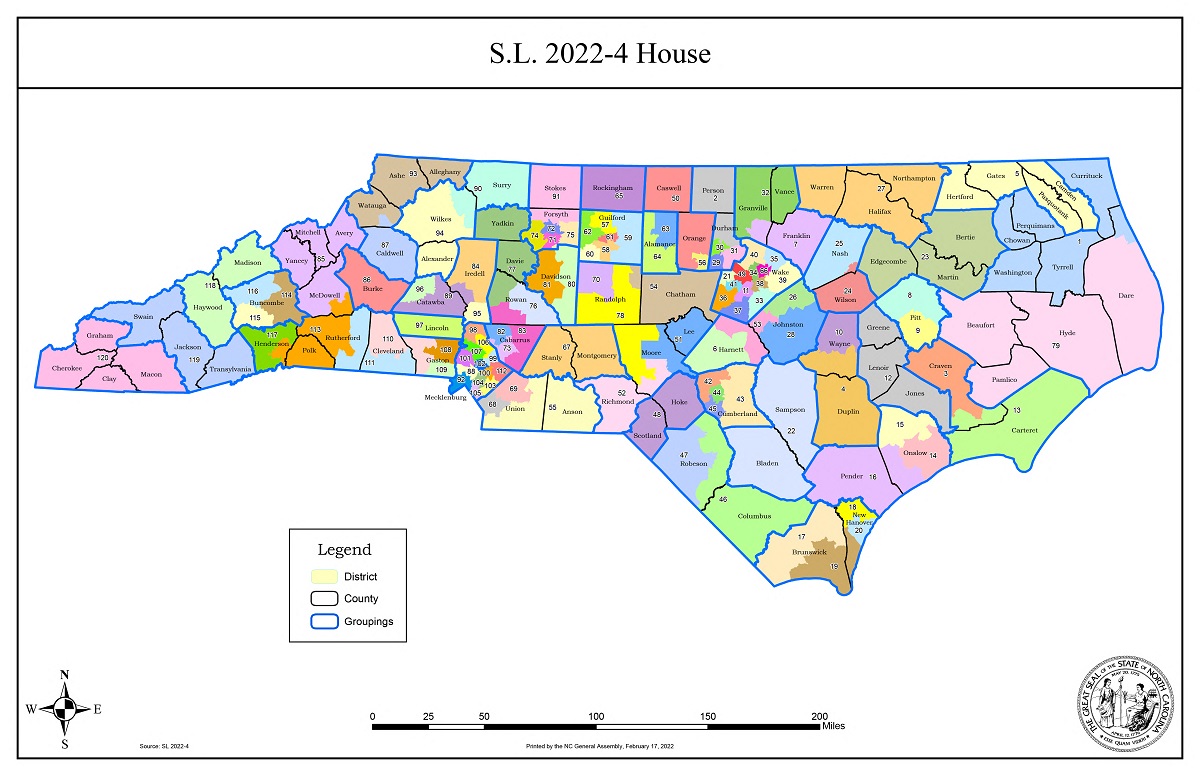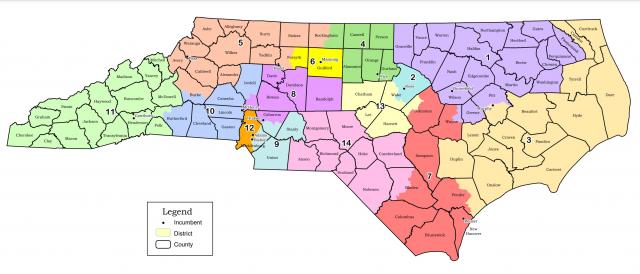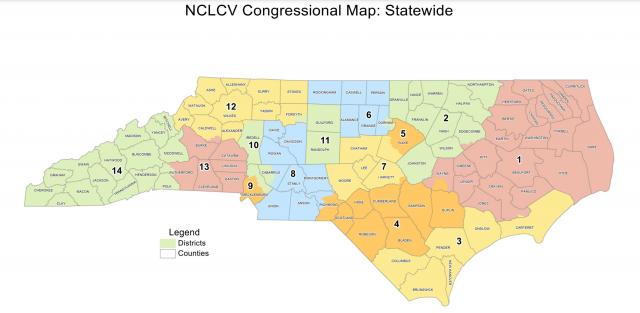
Reprinted from WRAL
Plaintiffs in an ongoing lawsuit that could settle North Carolina’s legislative and congressional districts next week submitted recommendations to the court Friday as a key deadline passed in the case.
Supporter Spotlight
Their proposed districts join a trio of maps approved Thursday by the North Carolina General Assembly, as required under a state Supreme Court order. Parties in the case had until 5 p.m. Monday to comment on all the submissions, then a panel of three Superior Court judges overseeing the case, assisted by three retired judges the panel brought in for advice, will approve final maps.
That’s expected to happen by noon Wednesday.
If anyone wants to appeal that decision back to the state Supreme Court, they must do so by 5 p.m. the same day. Otherwise the plan is to open candidate filing with the new districts at 8 a.m. Thursday. That will last until March 4, then the ballots will be set, and the primary is planned for May 17.

Because many people vote consistently for Republicans or Democrats, and because past election results are easily accessible, the maps can be scored district-by-district to predict future election results.
That allows mapmakers to draw districts likely to boost political power for one party or the other, and the state Supreme Court said earlier this month that maps drawn by the General Assembly’s GOP majority were unconstitutional partisan gerrymanders meant to lock in Republican control.
There are three plaintiff groups. The following are their submissions:
Supporter Spotlight
Harper plaintiffs. The group of voters challenging the legislature’s original maps, including a voter named Rebecca Harper, submitted two full map proposals: One for congressional districts and another for the state Senate. It didn’t submit a state House proposal, noting that plan passed the legislature this week on a bipartisan vote.
The state Senate and congressional plans, though, “were forced through the General Assembly by Republicans, were passed on strict-party line votes,” the Harper legal team said. They remain “partisan gerrymanders that flout the Supreme Court’s decisions in this case,” the group’s brief states.
This submission particularly complained that the legislature’s proposed congressional map “once again divides the cities of the Piedmont Triad into three separate districts to dilute the voting power of Democratic voters there, with ripple effects throughout the map.” Instead the Harper plaintiffs proposed a congressional map submitted by Sen. Jay Chaudhuri, D-Wake, back in October, saying Democrats could expect to win eight seats on this map based on results from the 2020 governor’s race, and that Republicans would likely win six.

The map Republican lawmakers approved last week leans more toward the GOP, but it includes four competitive seats that either party could expect to win. Catawba College political scientist Michael Bitzer called this map “shockingly competitive” when it was released, but legislative Democrats voted against it, citing many of the same reasons the Harper plaintiffs detail in their brief.
Former U.S. Attorney General Eric Holder, whose redistricting group helped fund the Harper team’s legal efforts, in a statement Friday called the legislature’s new congressional and Senate maps “an abomination.” Holder, a Democrat, said GOP lawmakers “arrogantly decided to draw congressional and state Senate maps that continue to lock in an artificial and unjust advantage for their party.”
Senate Preside Pro Tem Phil Berger‘s office responded on Twitter, saying that, in 2020, Gov. Roy Cooper won half the districts in the legislature’s proposed Senate map. Berger’s office also noted the congressional map has four “highly competitive districts.”
“Denying the competitiveness of these maps is just another one of Eric Holder’s ‘sue-til-blue’ tactics,” Berger’s office said.
The Harper plaintiff’s Senate plan is based off an ensemble of maps generated by a Duke University mathematician’s algorithm. Professor Jonathan Mattingly, who testified for the plaintiffs as an expert in this redistricting lawsuit, compared those computer-generated maps to the General Assembly’s initial proposed maps, showing the legislature’s maps to be outliers and, thus, partisan gerrymanders.
N.C. League of Conservation Voters. The group submitted proposed maps for all three redraws: state House, state Senate and congressional.
It went with the same maps it submitted during trial, saying they’ve already been tested by that process and are “uniquely suitable.” The league said in its brief that, on average, Democrats have gotten 49% of the vote statewide in North Carolina over the last decade.
“The NCLCV Maps give Democrats 49% of congressional seats, 46% of Senate seats, and 47% of House seats,” the group said in its brief.

Common Cause. Common Cause, a government accountability watchdog group, didn’t submit full maps but asked the court to redraw a pair of districts: one in the state House, one in the state Senate.
The changes are needed, not to address partisan gerrymanders, the central issue in this redistricting case, but to avoid diluting the voting power of minority voters, the group said in its filing.
The proposed changes tinker with districts in Greene, Lenoir, Wayne, Duplin, Edgecombe and Pitt counties.
“There is racially polarized voting in this area, such that the white majority vote sufficiently as a bloc to enable it to usually defeat the minority’s preferred candidate,” Common Cause said in its filing.
Coastal Review is partnering with WRAL.com to provide readers with more news from the state capitol that is relevant to the coast.







